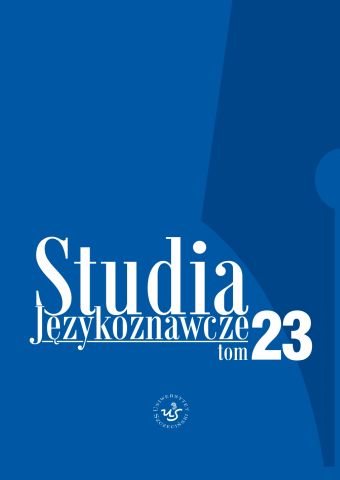Czy i jak o języku polskim i językach sąsiadów mówi się w polskim dyskursie parlamentarnym na tle dyskursu publicznego? Badania korpusowe
Whether and how the Polish language and the languages of neighbors are discussed in Polish parliamentary discourse against the background of public discourse? Corpus research
Author(s): Michał SzczyszekSubject(s): Language and Literature Studies, Theoretical Linguistics, Semantics, Pragmatics, Historical Linguistics, Comparative Linguistics
Published by: Wydawnictwo Naukowe Uniwersytetu Szczecińskiego
Keywords: linguistic image of Polish and neighboring languages; Polish communicative community; parliamentary discourse corpus vs. social discourse
Summary/Abstract: In this article I discuss the linguistic image of the Polish language and the languages of Poland’s neighbors as it functions in the Polish communicative community. Using available corpora of the Polish language and tools for statistical and linguistic analysis (in terms of semantics, linguistic image of the world (LIW) and pragmalinguistics – only indirectly, auxiliary and complementary), I reconstructed the perception of Polish, German, Czech, Slovak, Ukrainian, Belarusian, Lithuanian, Russian in two types of discourse: in parliamentary discourse and in extra-parliamentary, community-wide, public discourse. In an attempt to answer the question posed in the title of the text, I set myself a few more specific ones: which of the neighboring languages are most often referred to in the Polish parliament? And which one in Polish public discourse? Which language has the strongest position – in parliamentary discourse and in public discourse? What is the hierarchy of the neighboring languages in the Polish parliament? And how does it appear in Polish public discourse? What could be the reason for this? The results show a dichotomy in the perception of the neighboring languages – both as a block and in relation to each individual. German has the strongest position in both discourses, which may be due, for example, to Germany’s strong economic position as a state, while Belarusian or Slovak, for example, are positioned low, for example, due to the fact that these ethic groups belonged to larger state organisms in the past (USSR, Czechoslovakia). As for Russian, it is seen in older contexts as a carrier of high culture, and in newer contexts as the language of murderers and sadistic deviants (especially after Russia’s aggression against Ukraine). In general, towards all the neighboring languages – with the exception of Russian – their positive valorization is increasing. Polish is always valorized positively and is a kind of reference point for other neighboring languages.
Journal: Studia Językoznawcze. Synchroniczne i diachroniczne aspekty badań polszczyzny.
- Issue Year: 2024
- Issue No: 23
- Page Range: 195-227
- Page Count: 33
- Language: Polish

